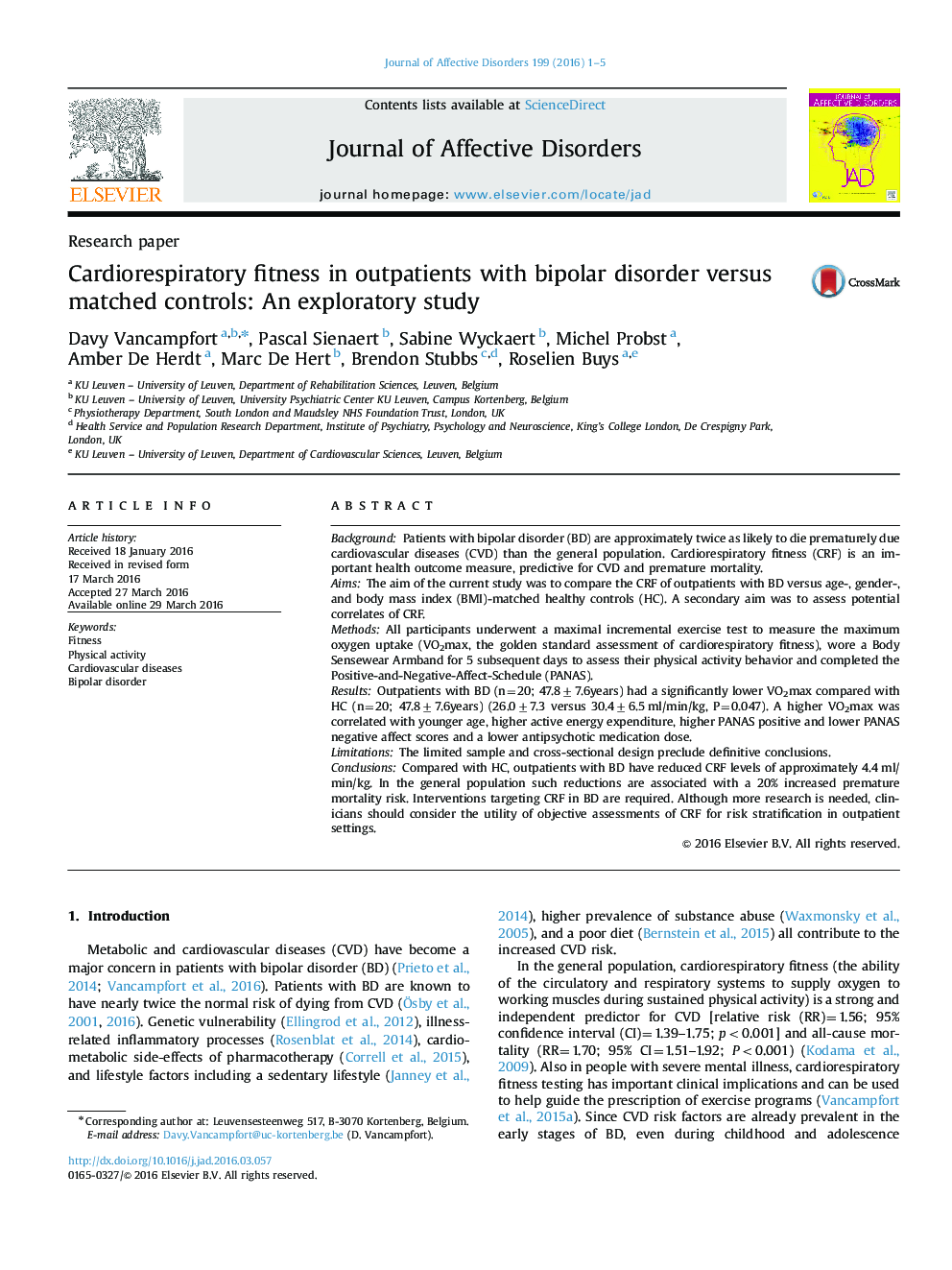| کد مقاله | کد نشریه | سال انتشار | مقاله انگلیسی | نسخه تمام متن |
|---|---|---|---|---|
| 6230129 | 1608126 | 2016 | 5 صفحه PDF | دانلود رایگان |

- Outpatients with bipolar disorder have a lower cardiorespiratory fitness than healthy controls.
- Maximal incremental exercise tests are safe and well tolerated by outpatients with bipolar disorder.
- Future research should explore the role of mood symptoms and antipsychotics on fitness levels.
BackgroundPatients with bipolar disorder (BD) are approximately twice as likely to die prematurely due cardiovascular diseases (CVD) than the general population. Cardiorespiratory fitness (CRF) is an important health outcome measure, predictive for CVD and premature mortality.AimsThe aim of the current study was to compare the CRF of outpatients with BD versus age-, gender-, and body mass index (BMI)-matched healthy controls (HC). A secondary aim was to assess potential correlates of CRF.MethodsAll participants underwent a maximal incremental exercise test to measure the maximum oxygen uptake (VO2max, the golden standard assessment of cardiorespiratory fitness), wore a Body Sensewear Armband for 5 subsequent days to assess their physical activity behavior and completed the Positive-and-Negative-Affect-Schedule (PANAS).ResultsOutpatients with BD (n=20; 47.8±7.6years) had a significantly lower VO2max compared with HC (n=20; 47.8±7.6years) (26.0±7.3 versus 30.4±6.5 ml/min/kg, P=0.047). A higher VO2max was correlated with younger age, higher active energy expenditure, higher PANAS positive and lower PANAS negative affect scores and a lower antipsychotic medication dose.LimitationsThe limited sample and cross-sectional design preclude definitive conclusions.ConclusionsCompared with HC, outpatients with BD have reduced CRF levels of approximately 4.4 ml/min/kg. In the general population such reductions are associated with a 20% increased premature mortality risk. Interventions targeting CRF in BD are required. Although more research is needed, clinicians should consider the utility of objective assessments of CRF for risk stratification in outpatient settings.
Journal: Journal of Affective Disorders - Volume 199, 15 July 2016, Pages 1-5